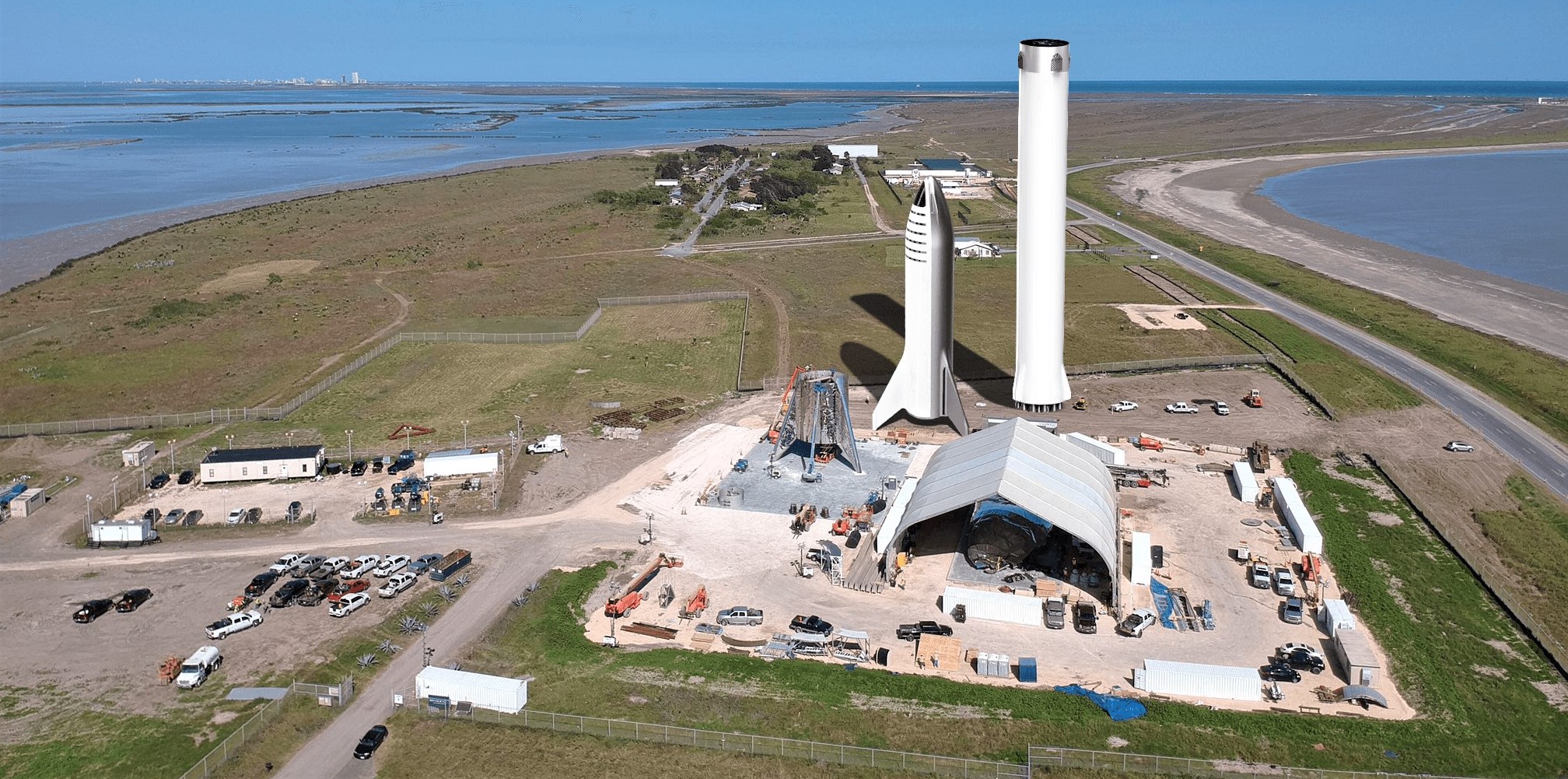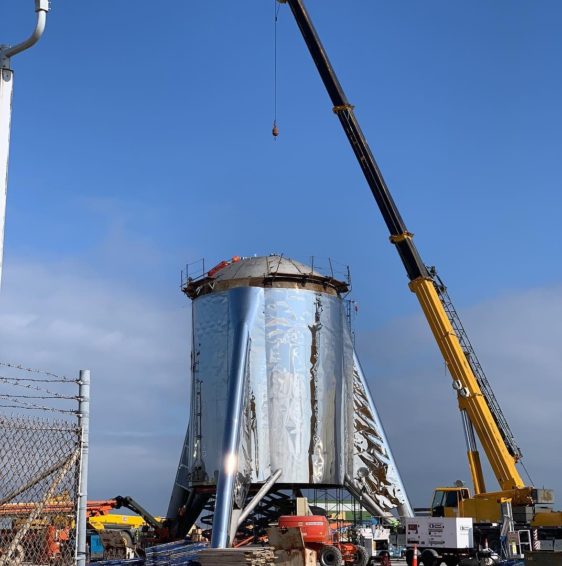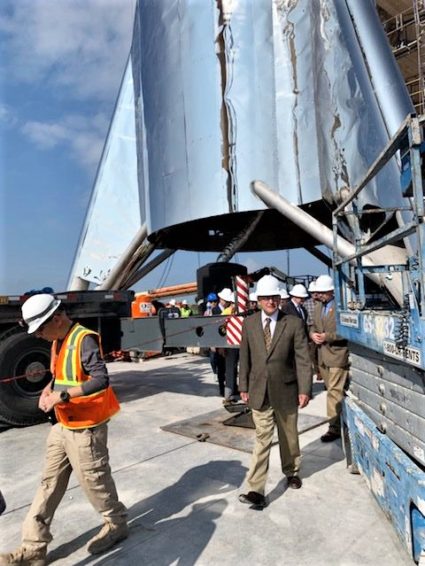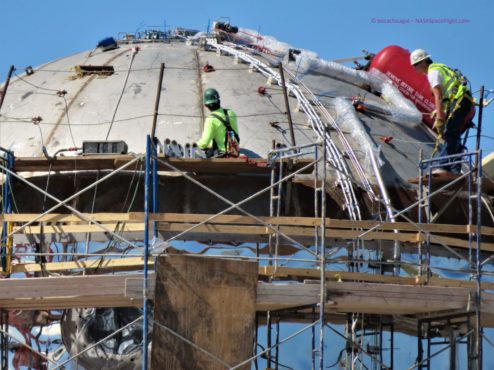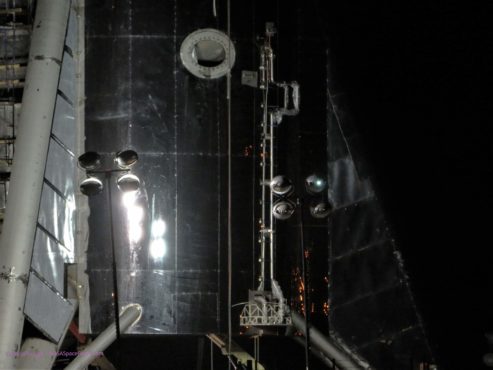A duo of SpaceX job postings at the company’s South Texas facilities have confirmed that both Starship and Super Heavy “flight article” vehicles will initially be fabricated and assembled on-site in Boca Chica, also implying that the rocket’s first orbital launch attempts will occur in the same vicinity.
Construction of the first massive Super Heavy booster could begin in Boca Chica within the next several months, presumably progressing in a similar fashion to Starship’s full-scale hopper prototype. According to CEO Elon Musk, Starhopper hop tests and Super Heavy construction could begin – respectively – as early as March and April 2019, perhaps just one or two months from now.

Where to build a giant rocket?
“Tank fabricators will work to build the primary airframe of the Starship and Super Heavy vehicles at the SpaceX South Texas build site. [They] will work with an elite team of other fabricators and technicians to rapidly build the tank (cylindrical structure), tank bulkheads, and other large associated structures for the flight article design of both vehicles.” – SpaceX, 02/15/19
Posted on February 15th, both open positions centered around structural assembly (i.e. welding) critical for the construction of the massive propellant tank domes, barrel sections, and other major structure of Starship and Super Heavy. Following an unanticipated pivot to stainless steel – rather than advanced carbon composites – as the primary structural material of choice for BFR, the project has been continually marked by a flurry of impressive technical progress at the same time as many previously foundational aspects became uncertain.
Most notably, SpaceX appeared to terminate a lease agreement it had held with the Port of Los Angeles for a large berth meant to be developed into a dedicated factory for BFR’s massive spaceship upper stage and booster, whose 9m (~30 foot) diameter would have been highly impractical to build somewhere that wasn’t either at the rocket’s launch site or directly adjacent to a port. With its headquarters in Hawthorne, CA (southwestern Los Angeles), SpaceX’s first choice was unsurprisingly the Port of LA, a location that would have allowed its 5000+ local employees to have seamlessly transferred to the BFR program without requiring highly disruptive relocations.
The source info is incorrect. Starship & Raptor development is being done out of our HQ in Hawthorne, CA. We are building the Starship prototypes locally at our launch site in Texas, as their size makes them very difficult to transport.
— Elon Musk (@elonmusk) January 16, 2019
Known as Berth 240, SpaceX’s lease began in March 2018 but was reportedly terminated in January 2019, likely meaning that the company will have to vacate the premises next month. While an official SpaceX statement and subsequent Elon Musk tweets relating to that report served to partially correct the record and confirm that “Starship prototypes” would be built locally in South Texas, Super Heavy was never mentioned. SpaceX’s latest job postings complete the image, indicating that all aspects of the first Starship and Super Heavy prototypes will be assembled in South Texas.
Weighing just shy of 4.5 million kilograms (~10M lbs) fully-fueled and standing around 118m (387 ft) tall with both stages stacked together, BFR is a beast of a launch vehicle and will require wholly new methods of production and assembly thanks to its sheer scale and the extensive integration of stainless steel alloys into its design. Compared to SpaceX’s Falcon 9 rocket, which is by no means small, Super Heavy on its own could end up being 68m (224 ft) tall, just slightly shorter than a complete Falcon 9 with a booster, upper stage, and fairing (71m, 233 ft). Standing on its tripod fins, Starship stands around 55m (180 ft) tall, although all of these figures are liable to change, as they come from a September 2018 SpaceX presentation that occurred before Musk publicized the move to stainless steel.
Ask and you shall receive! Here's an image with the mighty #SaturnV compared to the @SpaceX's upcoming #Starship and #Superheavy stack! Really gives a sense of scale how truly massive the rocket will be! ?
This and many of my other renders are now also available at my shop! pic.twitter.com/qTscwzWyKF
— Kimi Talvitie (@kimitalvitie) January 12, 2019
Likely to remain unchanged is the diameter of Starship and Super Heavy: 9m (30 ft), roughly 2.5 times wider than Falcon 9’s booster and upper stage. Even more true for a 9m-diameter rocket also meant to rely on a partial implementation of stainless steel balloon tanks, transporting Starship and Super Heavy more than a few thousand feet horizontally is going to be an extraordinary challenge, although SpaceX’s Boca Chica facilities are conveniently located just a mile or less from the Gulf of Mexico. While road transport is entirely out of the question, Saturn V’s massive first and second stage boosters proved to be relatively easy to transport thanks to the production facility being directly adjacent to a large body of water (or a river to get there, in their case).
“For all their prodigious bulk, [Saturn V’s 33.0 ft (10.1 m) diameter first and second stages] could be transported with comparative ease via seagoing barges [from Michoud, Louisiana to Cape Canaveral, Florida].” – Roger Bilstein/NASA, p. 301
Assuming SpaceX chooses to assemble Super Heavy with the same vertical, outdoors approach, Boca Chica, Texas is going to be greeted by a view even more exotic than the already-impressive progress being made with Starship’s Starhopper prototype. CEO Elon Musk noted that he believed the first Super Heavy prototype would begin to be built this spring (as early as April). In the meantime, SpaceX continues to exploit the benefits of stainless steel whenever it can, utilizing the company’s wealth of Hawthorne, CA expertise and infrastructure to fabricate subassemblies that can easily be shipped by road or plane to South Texas. After arrival, Boca Chica-based employees or contractors can be tasked with the considerably less infrastructure-intensive work of final assembly and integration, a challenging and critical process but one that is at least slightly more setting-agnostic.
SpaceX’s propulsion team continues to test the first full-scale Raptor engine a few hundred miles north of Boca Chica while Starhopper is gradually outfitted with a range of avionics, wiring, and plumbing needed for the vehicle’s hop test debut. That could come as early as March, according to Musk, although further delays should come as no surprise.
Check out Teslarati’s newsletters for prompt updates, on-the-ground perspectives, and unique glimpses of SpaceX’s rocket launch and recovery processes!

